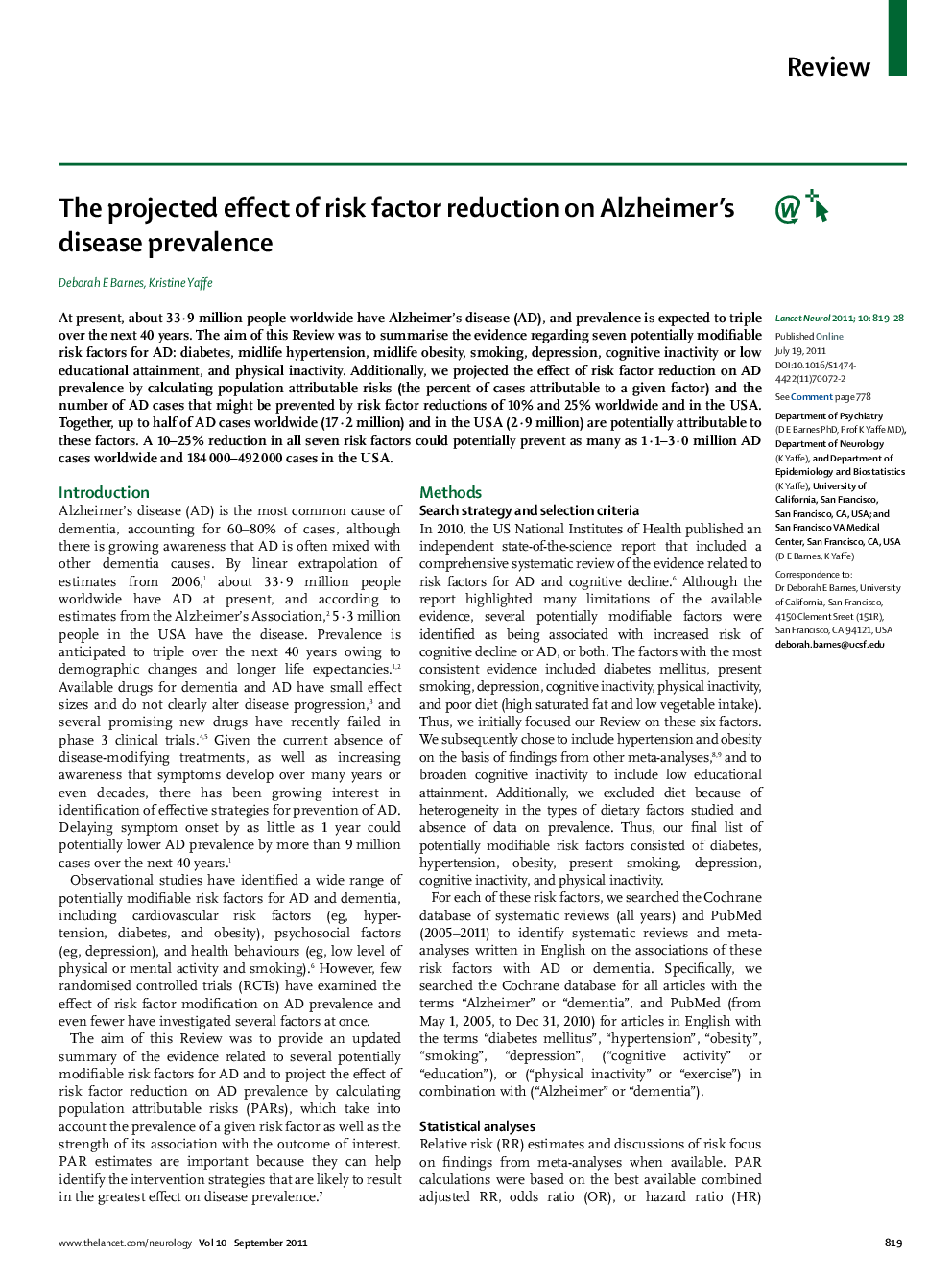| Article ID | Journal | Published Year | Pages | File Type |
|---|---|---|---|---|
| 3067163 | The Lancet Neurology | 2011 | 10 Pages |
SummaryAt present, about 33·9 million people worldwide have Alzheimer's disease (AD), and prevalence is expected to triple over the next 40 years. The aim of this Review was to summarise the evidence regarding seven potentially modifiable risk factors for AD: diabetes, midlife hypertension, midlife obesity, smoking, depression, cognitive inactivity or low educational attainment, and physical inactivity. Additionally, we projected the effect of risk factor reduction on AD prevalence by calculating population attributable risks (the percent of cases attributable to a given factor) and the number of AD cases that might be prevented by risk factor reductions of 10% and 25% worldwide and in the USA. Together, up to half of AD cases worldwide (17·2 million) and in the USA (2·9 million) are potentially attributable to these factors. A 10–25% reduction in all seven risk factors could potentially prevent as many as 1·1–3·0 million AD cases worldwide and 184 000–492 000 cases in the USA.
